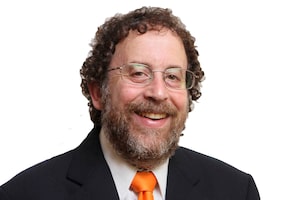Careers involve pivotal moments with crucial decisions. That can be particularly true in our 30′s, when we can be presented with promotional or deep learning opportunities, feel we’re trapped in the wrong job or consider having children.
Decision-making tools can be helpful. One of the best I have seen comes from a little-noticed 2001 book, What Do I Do Now?, by Charles Foster, which shared 30 decision-making guidelines. I have found people generally find one or two particularly relevant for a decision they are facing. Here are 10:
- Focus on the most important thing. Of all the things you’re judging, one factor is the most important and must be given greater weight than anything else. “The most important thing will most often have to do with what you want for yourself based on your hopes and dreams for the long term,” he writes.
- Don’t decide until you’re ready. Don’t act on impulse or succumb to decision or career panic. Give yourself time to see. That can be difficult with many career choices, of course, when opportunities are thrust upon you. But if you’re not ready, see if that can be worked into the scenario.
- Look for all the good things that can happen. Don’t get wrapped up in all the negatives. Make your decisions as if you were scared of missing a wonderful opportunity on the upside.
- Base your decision on self-acceptance. Look yourself in the mirror and ask: What about me needs to be true for this decision to work out? And are those things in fact true? “There is no bad news about who you are. The bad news comes when you refuse to accept who you are and make decisions that are terribly wrong for you,” he writes.
- Turn big decisions into a series of little decisions. Figure out what small step you can make first, allowing those initial decisions to teach you what the big decision should ultimately be.
- You always have better options. Unearth them, rather than simply accepting the possibilities at hand.
- Get what you need to feel safe. For some people, that means knowing the worst that can happen; or needing to know they can back out at the last moment; or needing to know everyone they care about agrees with the decision. Identify your safety needs related to the decision at hand.
- Never let a lower priority outweigh a higher priority. Make sure your priorities are straight. This may be the decision-making law that is violated most often, he advises.
- Know your Achilles Heel. Know the bad habits, situations and instincts that get you in trouble.
- Do what you really want. People who make good choices ask themselves what they want and give a lot of weight to that.
In recent years, Amazon founder Jeff Bezos has added to our decision-making repertoire with the notion of one-way and two-way doors. Some decisions are like a door you can walk through but also immediately return if you don’t like what you find on the other side. Others are one-way portals – irreversible, and when the decision is consequential, it’s vitally important to get it right. His schema was meant for busy Amazon managers, who should act quickly on two-way door, reversible decisions. For careers, some decisions are one-and-a-half-way door decisions, reversible, perhaps even quickly, albeit at a cost. It’s worth assessing reversibility before you walk through the door.
Also popular these days is the notion of looking at how you might feel about the decision in future intervals: Perhaps three months, three years and 30 years. You can alter those intervals depending on the situation. It’s particularly helpful for a switch in careers, which might lead to a different you; in three months, you might feel relief, but what about three years or 30 years?
Finally, perhaps the ultimate. Flip a coin to decide between two choices. When it lands and decrees what you should do, your gut will tell you whether that’s right.
Quick Hits
- Venture capitalist and blogger Sahil Bloom urges you to create a Think Day once a month where you step back from day-to-day professional responsibilities, turn off devices, seclude yourself and ponder important issues.
- If you make a mistake, consultant Steve Keating advises acknowledging it promptly, accept all responsibility and if possible offer a solution to rectify the error.
- Author James Clear warns “the information you consume each day is the soil from which your future thoughts grow.”
- Attention Span author Gloria Mark recommends if a child can see you, do not use your phone. If it’s in a public area, if you need to use your phone, step away to use it. In Germany, she says, people might cross at a crosswalk even when the light is red if there are no cars; however, there is an unspoken agreement not to do so when children are around because they adopt the behaviour around them.
Harvey Schachter is a Kingston-based writer specializing in management issues. He, along with Sheelagh Whittaker, former CEO of both EDS Canada and Cancom, are the authors of When Harvey Didn’t Meet Sheelagh: Emails on Leadership.
 Harvey Schachter
Harvey Schachter